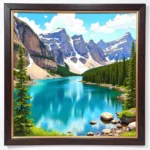Creating the perfect sand color paint can transform your living space into a tranquil oasis. Whether you’re aiming for a light, airy beach vibe or a richer, more grounded desert feel, achieving the desired shade requires a bit of color know-how. This guide will explore various techniques to mix sand-colored paint, offering tips and tricks to help you achieve the perfect hue for your next project.
 Mixing Sand Colored Paint
Mixing Sand Colored Paint
Achieving the perfect sand color involves understanding the undertones and how different pigments interact. While pre-mixed sand-colored paints are available, mixing your own allows for greater control over the final result. You can tailor the shade to perfectly complement your existing décor. This can be especially useful if you are looking to coordinate with existing elements, such as what colors pair well with sage green.
Understanding the Basics of Sand Color
Sand isn’t just one color. It ranges from pale beige to deep gold, influenced by factors like mineral content and location. Understanding this spectrum is crucial to achieving your desired shade. Think about the specific sand you want to emulate. Is it the white sand of a tropical beach, or the reddish sand of a desert landscape? This will inform your color choices.
Mixing Your Own Sand Colored Paint
To begin, start with a base of white paint. From there, you’ll gradually add small amounts of other colors to achieve your desired shade. Yellow ochre is essential for the warm undertones of sand, while raw umber adds depth and complexity. A touch of burnt sienna can create a richer, more reddish-brown sand color.
Step-by-Step Guide to Mixing Sand Color Paint
- Prepare your materials: Gather your white base paint, yellow ochre, raw umber, burnt sienna (optional), a mixing palette, and a palette knife or stir stick.
- Start with white: Dispense a generous amount of white paint onto your palette.
- Add yellow ochre: Introduce a small amount of yellow ochre to the white paint, mixing thoroughly.
- Incorporate raw umber: Gradually add raw umber, a little at a time, until you reach the desired depth.
- Fine-tune with burnt sienna (optional): If you’re aiming for a reddish sand, add a touch of burnt sienna. Remember to add small amounts and mix well between additions.
- Test the color: Apply your mixed paint to a small, inconspicuous area or a piece of sample board. Let it dry completely to see the true color.
Common Sand Color Paint Questions
How do I make light sand colored paint?
For a lighter sand color, use less raw umber and focus on the white and yellow ochre. You may even consider adding a touch of titanium white to further lighten the shade.
Can I use pre-mixed colors?
Yes, you can start with a pre-mixed beige or off-white paint and adjust it with small additions of yellow ochre and raw umber.
What if my sand color is too yellow?
If the color is too yellow, adding a small amount of its complementary color, violet, can neutralize the yellow and bring it closer to the desired shade. Alternatively, adding a touch more raw umber can help balance the color.
Conclusion
Making sand color paint is a rewarding process that gives you complete control over the final shade. By understanding the undertones and carefully mixing your pigments, you can create the perfect sand color to enhance your home. Remember to always test your color before applying it to the entire surface. Now that you know how to make sand colored paint, you’re ready to bring the calming beauty of the beach or the desert into your living space. Considering the right nail polish color? Check out what color nails make you look tan for some inspiration. You might also be interested in learning about other earthy tones, such as what color is terratone or what color is chamois.
FAQ
- What is the best white base to use for sand colored paint?
- Can I use acrylic paints to make sand color?
- How can I adjust the saturation of my sand color?
- What type of paint finish works best for sand colored walls?
- What other colors complement sand colored paint well?
- How do I clean up after mixing my own paint?
- Can I store leftover mixed sand color paint?
Need help with a project? Contact us! Phone: 0373298888, Email: [email protected] or visit our showroom at 86 Cầu Giấy, Hanoi. Our customer service team is available 24/7.

